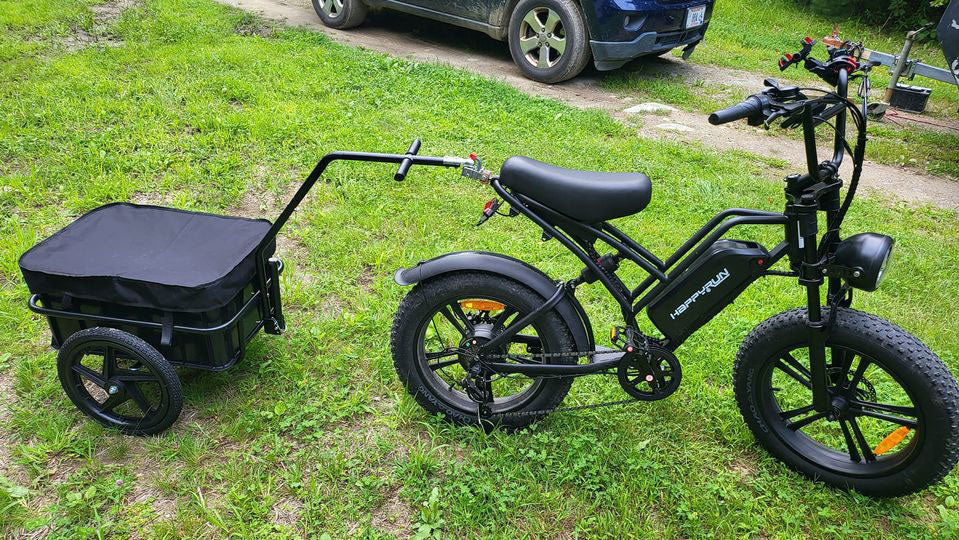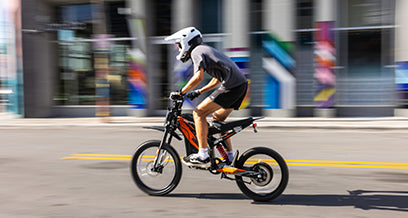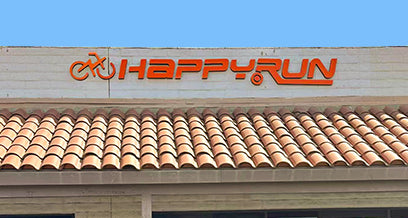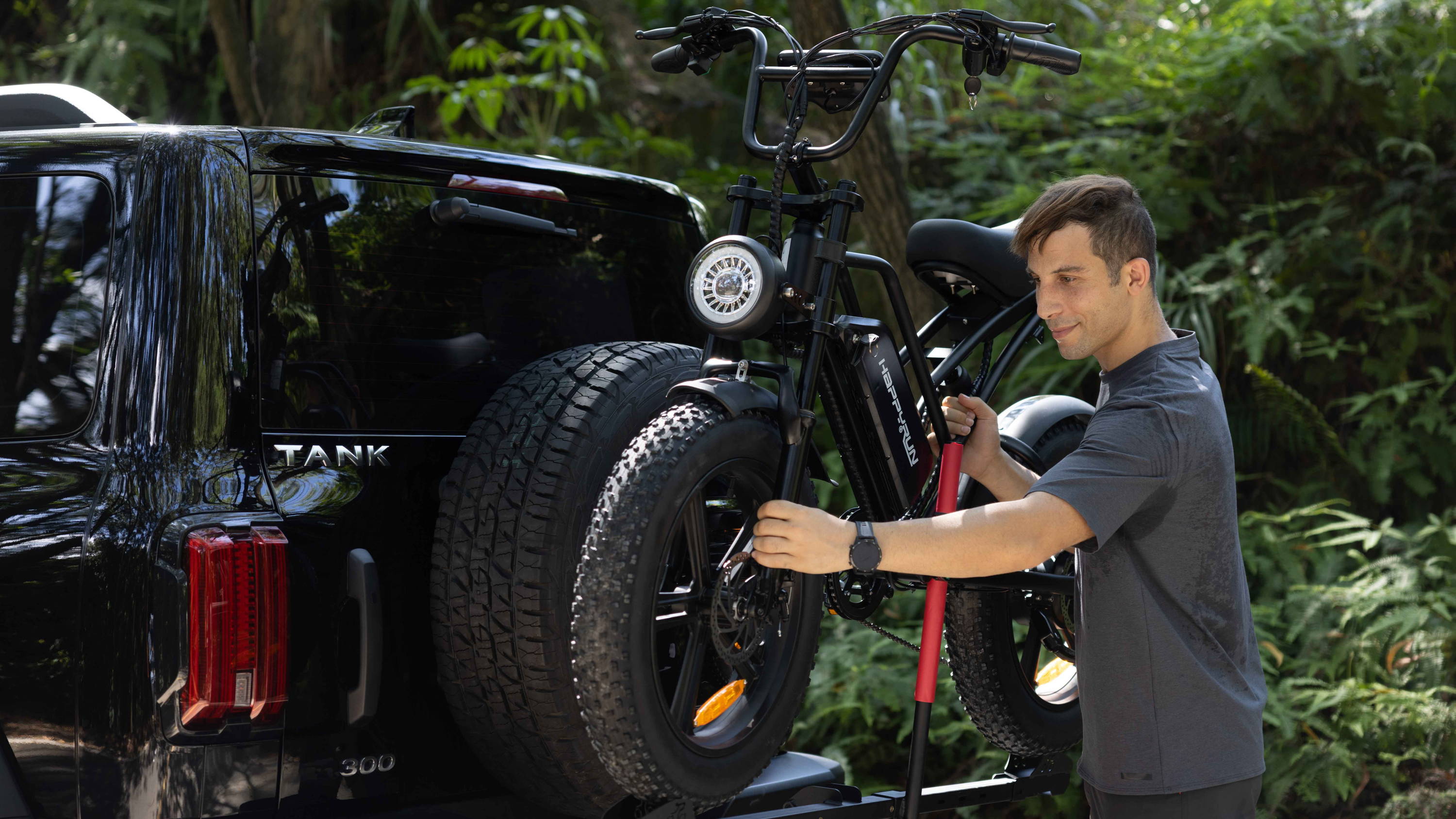
Are Fat Tire Bikes Harder to Pedal? Why Wider Tires Are Winning
Fat tire bikes can be harder to pedal than standard bikes due to increased rolling resistance and heavier frames. However, they offer unique benefits that make them popular among riders, such as enhanced stability and traction on various terrains. Understanding these factors can help you decide if a fat tire bike is right for you.
Do you ever contemplate how hard it is to pedal an e-bike when fitted with a fat-wheel tire? The electric bikes boast their sturdy rolling tires running flat across any kind with coating. Nevertheless, the question is what about the class energy transmitted by big tires to the pedals when changing gears? As a response, like so many things in the world, is not as straightforward either. The article aims to find what factors make fat tire biking difficult or more comfortable, explore the benefits of fat tire e-bikes, and effects of fattie e-biking on one's ability to pedal. We will continue with an extensive question and answer session to clear all doubts and help you have a friction-free journey ahead!
What is a Fat Tire E-Bike?
Fat tire e-bikes, a complex to say that the bikes are the ultimate off-road friends. These e-bikes are outfitted with tires that are super-wide and they are way bigger than a normal bike. This vast evolution is the reason why they are responsible for the joyous moments experienced while traveling. The truck's big tires have a lot of grip and excellent base support over difficult conditions, such as sand, snow, and rocky roads. In addition, their suspension duties are vital as they would act as shock absorbers, hence smooth ride along even surfaces will be their new friends. Heavy-duty tires are good for muddlers as those have low spare weight, yet, there is no evidence that these can make you ride slower. On the contrary, a high-geared bike has extra traction which helps you to rush up the hills quickly and they are capable of leaving conventional bikes miles behind when it comes to irregular or rugged terrain. Therefore, consider yourself lucky if you have been looking for an e-bike that can ride anything that you feel like and you will be riding a fat tire e-bike.
What Makes Fat Tire Bikes Different from Standard Bikes?
Fat tire bikes are characterized by their wide tires, typically ranging from four to five inches in width. This design provides better traction and stability on soft or uneven surfaces, making them ideal for riding on sand, snow, or rough trails. However, the increased surface area also leads to greater rolling resistance compared to standard bikes, which can make pedaling feel more laborious.Diagram: Comparison of Tire Widths and Their Effects on Performance
How Does Rolling Resistance Affect Pedaling Difficulty?
Rolling resistance is the friction that occurs between the tires and the ground. Fat tires have a larger contact area, which increases this resistance, especially on hard surfaces like pavement. As a result, riders may find that pedaling requires more effort compared to using narrower tires, which are designed for efficiency and speed.
Why Do Heavier Frames Impact the Ease of Pedaling?
Fat tire bikes often come with sturdier frames to support the wider tires and provide durability for off-road conditions. This added weight can make acceleration and climbing hills more challenging. While some riders appreciate the robustness of fat tire bikes, it is essential to consider how this weight might affect your riding experience.
What Are the Advantages of Riding Fat Tire Bikes?
Fat tire bikes offer several advantages, including enhanced stability and traction on challenging terrains like snow and sand. Their wide tires provide a cushioned ride, absorbing shocks from rough surfaces. Furthermore, they excel in versatility, allowing year-round riding across various conditions while reducing rider fatigue during long trips.
Despite the challenges associated with pedaling fat tire bikes, they offer several advantages:
- Smoother Sailing: Cheap fat tire electric bike roll easier! Tests show they have less rolling resistance than skinny tires at the same pressure. This means your e-bike glides more efficiently over all kinds of surfaces.
- Enhanced Stability: The wider tires provide better balance and control on uneven surfaces.
- Improved Traction: Fat tires grip better in loose conditions like mud or snow, allowing for safer rides. Grippy in All Weather. The cheap fat tire electric bike enjoys a better grip primarily on curved roads where water accumulates. The tire did have a larger console and broader groove which assisted in the water channeling away from it hence the risk of skidding (aquaplaning) was reduced. Also, for better traction on those rainy days, you can ride your cheap fat tire electric bike at slightly lower pressures. Similarly, more air pressure on your tires means that you might get stiffer and they also get more resistant to bouncing around.
- Conquer Any Terrain: Fat tires are like off-road champions. Their bigger air volume and lower pressure let you ride comfortably over snow, sand, mud, rough trails, and even the beach! Cheap fat tire electric bikes are less likely to get stuck down or burst a tube of tires like skinny tires.
- Comfortable Ride: The increased air volume in fat tires absorbs shocks from bumps and rough terrain, leading to a smoother experience.
- Built to Last: The harder construction of 20-inch fat tire electric bikes means they are the best ones as compared to the other kinds of tires. , you’ll buy something that will last longer and therefore need fewer replacements and this will eventually save you money.
So, How Easy is it to Pedal a Fat Tire E-bike?
What Impacts Your Ability to Pedal? Even with a motor, how easy it is to pedal a 20-inch fat tire electric bike depends on a few things:
- Frame Material: Lighter aluminum frames are easier to move around, but steel frames might feel a bit stiffer when you pedal.
- Motor Power: A more powerful motor will give you a bigger assist, so pedaling feels easier. A less powerful motor might require a little more effort from you.
- Terrain: As a result of this, getting up slopes or going through soft sand and mud will require tons of effort. However, the fact that fat tires have more rolling resistance means that it will require more effort to get them rolling.
- E-bike Quality: Cheaper batteries or motors cannot deliver power efficiently, so you can feel like you are working very hard, for example when you are pushing your bike on climbs or muddy surfaces.
How Can Riders Mitigate the Challenges of Pedaling Fat Tire Bikes?
Riders can mitigate challenges when pedaling fat tire bikes by maintaining proper tire pressure for optimal rolling resistance. Using lower gears helps manage steep climbs more easily. Additionally, focusing on body positioning and weight distribution can enhance balance and control, making it easier to navigate various terrains without excessive effort.
To make riding fat tire bikes easier:
- Weight: These thick tires with other motors will eventually cause a fat tire electric bike to have an accentuated or sizable weight. This added weight will therefore proactively change the ways of starting from a stop when climbing hills or when riding on rough terrain. That is, it will make it somewhat harder to start from a stop climb hills, and ride on rough terrain.
- Adjust Tire Pressure: Lowering tire pressure can improve traction on soft surfaces but may increase rolling resistance on hard surfaces. Finding the right balance is key.
- Pedal Assist Level: E-bikes, unlike regular bikes, are unique in that they come with a built-in adjustable feature which most bike riders don't like because it makes the riding experience more difficult. More assist level implies that the engine is involved more frequently, hence it is always wind-free. Smaller gear ratios make descents more challenging. Decide what level to study and use depending on your purpose and preference.
- Wider Tires, More Grip, More Resistance: The broad surface areas on big tires present a phenomenal stickiness, this is great for loose surfaces and slippery conditions. Although the higher design helps with resistance, this is more case when it comes to rough pavements. On the other hand, rolling on level roads will make the resistance more difficult. You should probably be ready to supply your 20 inch fat tire electric bike with the equivalent amount of energy that you can use for your regular tire ebikes.
- Use Gears Wisely: Utilize lower gears when climbing or navigating tough terrain to reduce effort.
- Lighten Your Load: Consider upgrading components or removing unnecessary gear to decrease overall weight.
Fat Tire vs Regular Tire E-bike
Either an e-bike with fat tires or one with regular tires will depend on how you ride and what you want to use it for. With their incredibly broad tires, fat tire e-bikes perform well off-road. For better grip and stability, the tires' larger surface area scrapes into loose surfaces like sand gravel mud, and snow. For daring riders who yearn to venture beyond well-traveled routes, this makes them perfect. Regular tire e-bikes, on the other hand, are lighter and have less rolling resistance due to their smaller profiles. This leads to less effort needed to maintain pace and a smoother, more efficient ride on pavement. Therefore, an e-bike with standard tires would be a preferable option for commuting or riding through cities. The "fat tire vs. regular tire e-bike" argument ultimately comes down to where
Buying Tips for Choosing the Right Fat Tire Bike
When purchasing a fat tire bike:
- Consider Your Riding Environment: Choose a bike that suits your typical terrain—look for models designed for specific conditions like snow or sand.
- Test Different Models: Take various bikes for a test ride to see which feels most comfortable and manageable.
- Research Brands: Reliable brands like HappyRun, known for their quality e-bikes with durable designs, can provide excellent options tailored to your needs.
E-Bike Expert Views
“Fat tire bikes are fantastic for specific environments,” says cycling expert John Doe. “While they may require more effort on flat surfaces, their stability and traction in challenging conditions make them invaluable.” He encourages riders to weigh their needs against the characteristics of fat tire bikes before making a purchase.
HappyRun Tank G50 Fat Tire EBike: Built for the City with Fat Tire
Conquer the city on two wheels with the HappyRun Tank G50 fat tire e-bike! These aren't your typical bike tires—the broad, 20-inch fat tires offer more stability and traction, making them ideal for safely negotiating wet and urban streets. The large tires provide a comfortable and secure ride whether you're cruising for fun or making your daily commute to work.
































Leave a comment